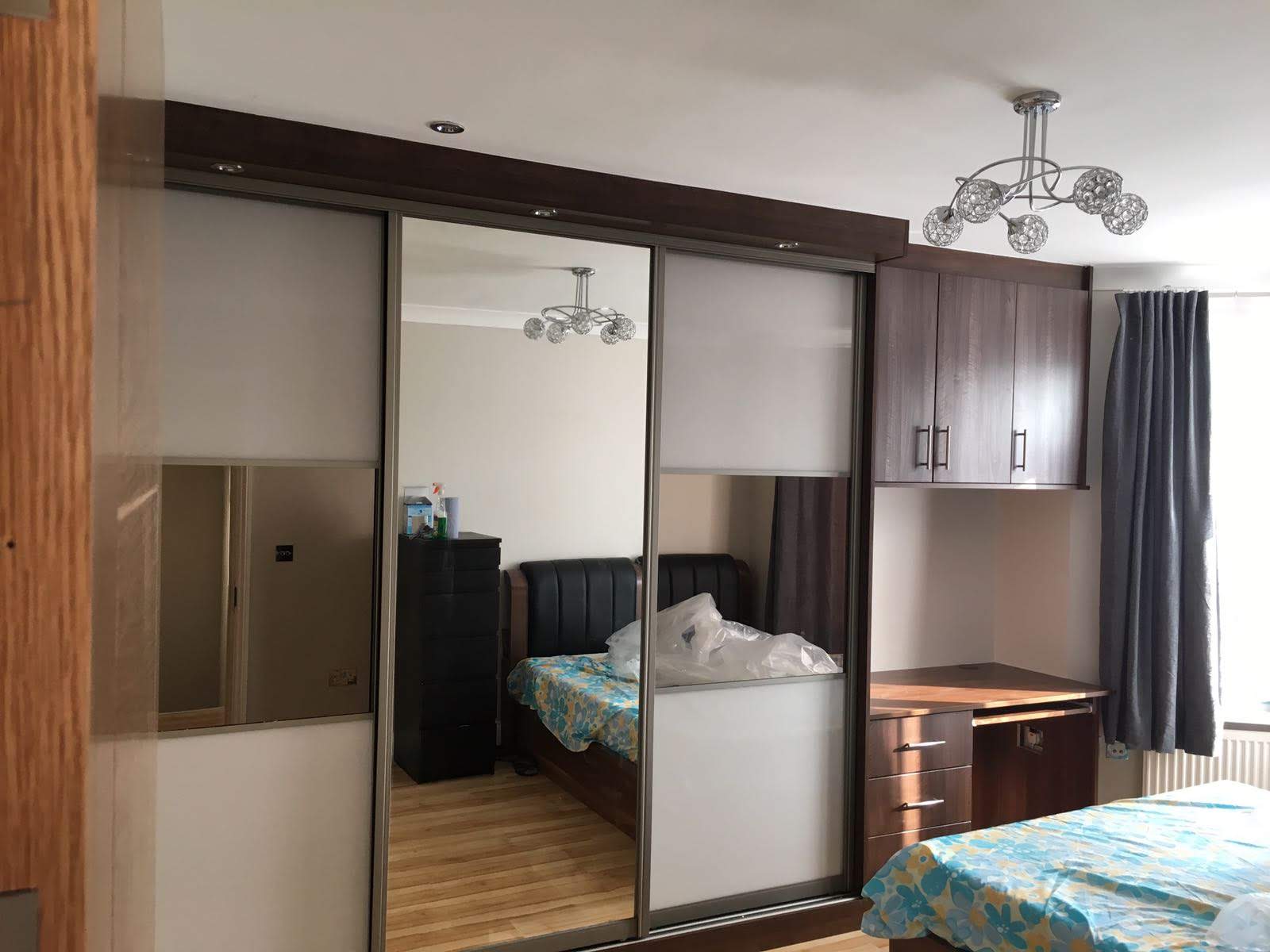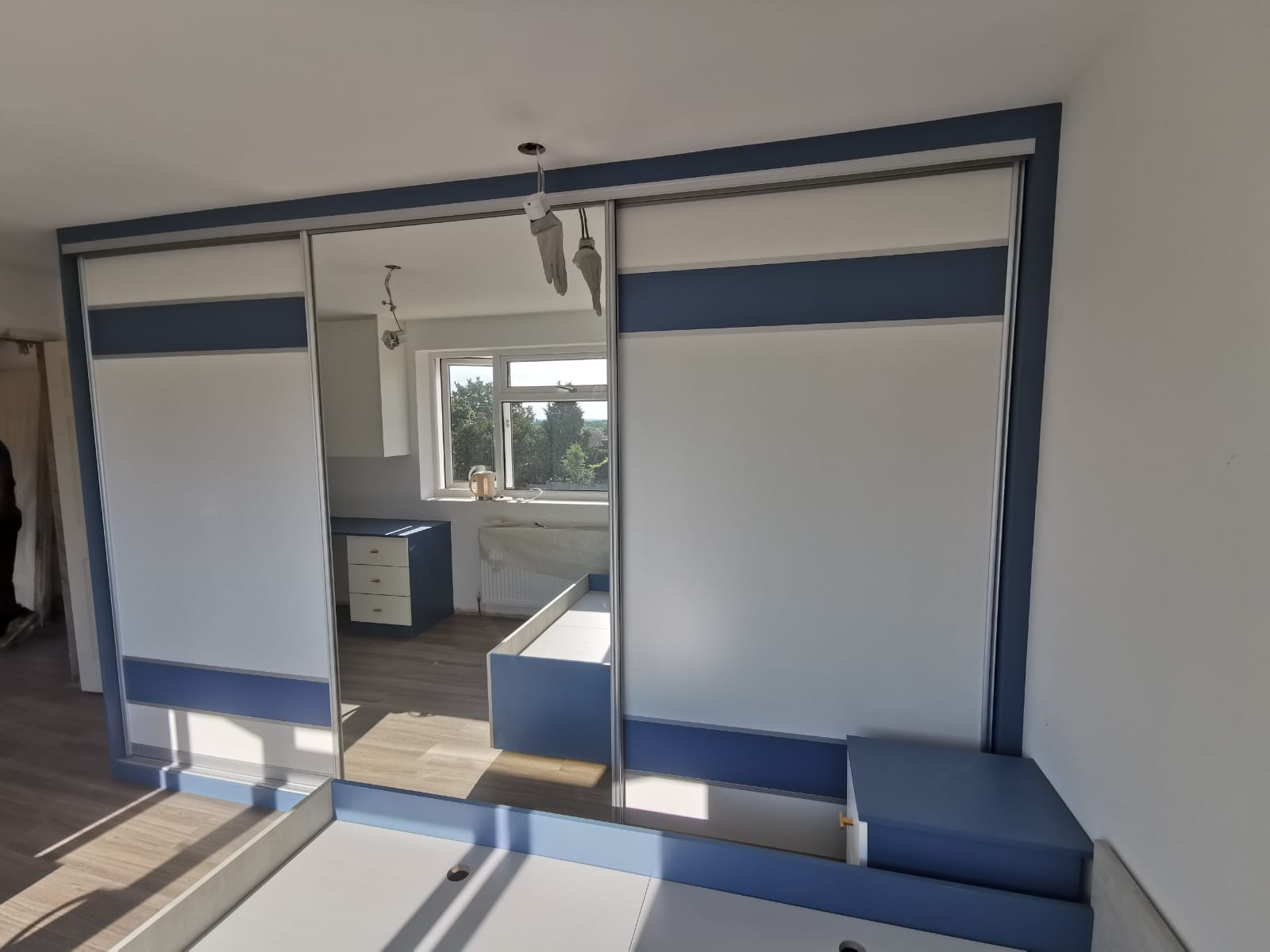- London Finest Interior Manufacturer

A general rule dictates at least 58cm-60cm depth for sliding wardrobes. However, room dimensions should be considered while deciding on the depth of the wardrobe’s components, like drawers, shelving units, and garment rails.
Consideration of multi-dimensional ambience of wardrobe is becoming necessary, like the types of wardrobe, the size of the door and the types of layout. For the Wardrobe installation process, we offer useful instructions for a flawless procedure.
Sliding wardrobes are a modern alternative to panel doors wardrobes. Moreover, they can cover those unsightly corners and dull walls, which are undesirable. They also provide a wide array of options to choose from.
At least 8.5cm depth is required to ensure the easy and proper functioning of the doors and enough spacing between doors and drawers or shelves. Keep in mind that this depth can be increased to any range depending on your requirements and the availability of the space.
You can use a sliding wardrobe with narrow shelving internals; depth requirements will depend on the arrangement of shelving units and the given functional capabilities.
Yet, from a general perspective, the minimum depth should be up to 25cm to 30cm to have sufficient space for sliding doors and narrow shelving internals.
Deep enough, the door can slide effortlessly, and also suitable storage depth is provided for the shelves.
Let’s consider the standard depth of 45cm for the wardrobe and an additional 9cm for the doors. This rounds up at 54cm, which is the minimum optimal depth for sliding wardrobes. However, taking the depth of drawers with the soft close mechanism into account, the minimum depth must not be less than 58cm.
Nonetheless, this 54cm match the actual depth of sliding wardrobes, but it can vary depending on the individual needs. You may need a little extra depth for largest and widest hangers to fit in the closet comfortably.
The width between 58cm and 60cm not only ensures sufficient space but also is almost equal to the average width of the sliding wardrobes that offers the convenience and ease of use

The side wall panel for a sliding wardrobe should be designed without including the part that’s hard to reach, and typically, it shouldn’t exceed 64cm in width. The depth can be adjusted during installation to accommodate the internal components and frame.
Most sliding wardrobes have two doors or a single end panel that’s between 54 to 64 cm wide. The back panel is usually around 90cm wide but may need modification to fit sloping ceilings or taller spaces, allowing shelves to be mounted at least 71cm deep.
When assembling a wardrobe for a slanted ceiling, consider the maximum depth of 90cm for the end panel or as outlined in the installation instructions.
This guideline ensures proper placement of the end panel, allowing for both shallow shelves along the sloping ceiling and deeper shelves closer to the bottom. If the sloped area starts low on the wall, it can be utilised to craft storage shelves deeper than the standard wall height of 90cm.
A sliding wardrobe extending from the wall to the ceiling offers the opportunity to create deeper compartments or even mimic a walk-in wardrobe without size constraints.
Keep in mind that it is important to keep the wardrobe’s depth optimal to ensure its functionality and create an efficient storage solution. We have described the depth for door panels and shelving units, which makes it at least 54cm in total. It can, however, exceed 60cm in some cases.
It is also worth noting that the maximum depth of sliding wardrobes has no limits. It depends on your requirements and the availability of space. You can even build a walk-in sliding wardrobe if your room has enough capacity.
Weekly and Monthly Sales, Discounts & More!